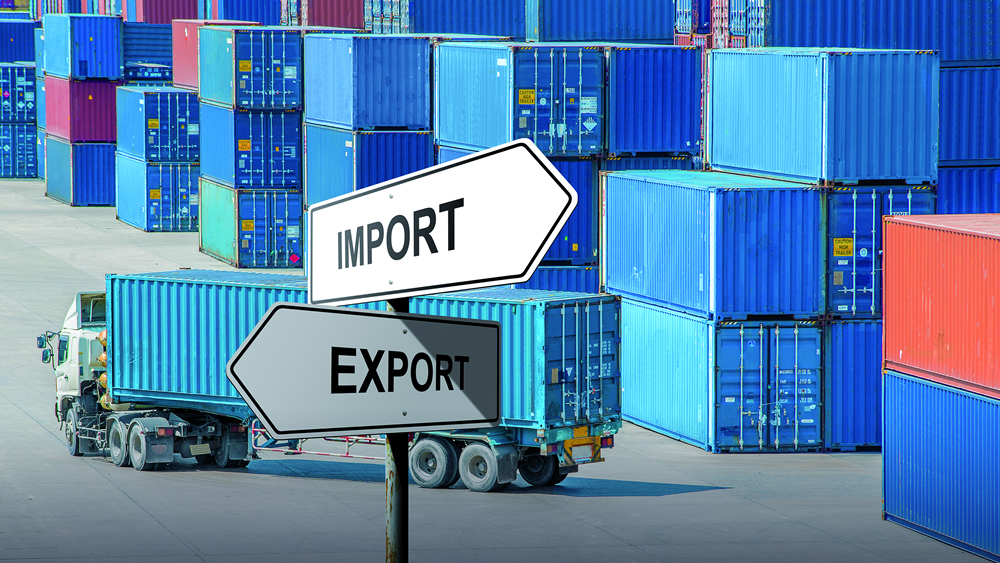Global trade began 2025 on stable footing, but emerging challenges are quickly reshaping the landscape, according to the latest Global Trade Update from the United Nations Conference on Trade and Development (UNCTAD), which covers data through early March.
The update reveals a complex trade environment ahead, shaped by evolving policies, geopolitical tensions, and economic risks.
In 2024, global trade reached a record $33 trillion, marking a 3.7% growth from 2023. This expansion was primarily driven by developing economies and robust services trade. However, as 2025 progresses, a range of new risks threaten to disrupt this momentum, including persistent trade imbalances, shifting policies, and rising geopolitical instability.
A widening gap between developing and advanced economies is becoming evident. While Asia and Latin America continue to be key drivers of trade, growth has slowed in many advanced economies. Although South-South trade remains resilient, Africa’s intra-regional trade is shrinking, reversing previous progress. Additionally, trade between Europe and Central Asia has declined, reflecting changes in demand dynamics.
A notable trend in 2024 was the shift away from nearshoring and friendshoring, where businesses had previously focused trade on geopolitical allies or nearby regions. Instead, firms are diversifying their supply chains across multiple regions to mitigate risks, creating new opportunities but also increasing complexity in global trade networks.
Trade dependence is also evolving. Economies like Russia, Vietnam, and India have strengthened trade ties with specific partners, while nations such as Australia and the European Union are reducing their reliance on traditional markets. This diversification signals a shift toward a more balanced global trade network, with smaller economies playing an increasingly important role.
Meanwhile, governments are implementing a range of policies, including higher tariffs, subsidies, and industrial strategies, which are reshaping trade flows. The United States, European Union, and others are increasingly linking trade measures to economic security and climate goals. At the same time, China is using stimulus policies to support its export sector.
This policy realignment is contributing to growing uncertainty. Rising protectionism, particularly in advanced economies, is triggering retaliatory measures from trading partners, further increasing trade barriers. Additionally, industrial policies targeting sectors like clean energy, technology, and critical raw materials could distort competition and trade dynamics.
In 2024, global trade imbalances returned to levels seen in 2022. The U.S. trade deficit widened, while China’s surplus grew. The EU also shifted to a trade surplus, largely due to changes in energy prices. Bilateral imbalances remain prominent: the U.S.-China trade deficit is deepening, the EU’s surplus with China is expanding, and India’s deficit with Russia is growing, fueled by shifting energy trade patterns. These trends may prompt new tariffs, restrictions, or investment shifts, adding to the overall economic uncertainty.
Trade growth varied by industry in 2024. Sectors such as agri-food, communications technology, and transport saw gains, while industries like energy, apparel, and extractives experienced slower growth due to weaker demand and policy shifts. Shipping trends also suggest a slowdown, with falling freight indices pointing to weaker industrial activity, particularly in sectors highly dependent on global supply chains.
As global trade uncertainty increases, the need for international cooperation and balanced policy approaches becomes more critical. While China’s stimulus measures and lower inflation in some regions could support trade, protectionism and shifting policies in major economies pose significant risks.
UNCTAD emphasizes that the challenge in 2025 is to prevent global fragmentation, where countries form isolated trade blocs, while managing policy shifts in a way that does not undermine long-term growth. The decisions made by governments and businesses today will significantly influence the resilience of global trade for years to come.




